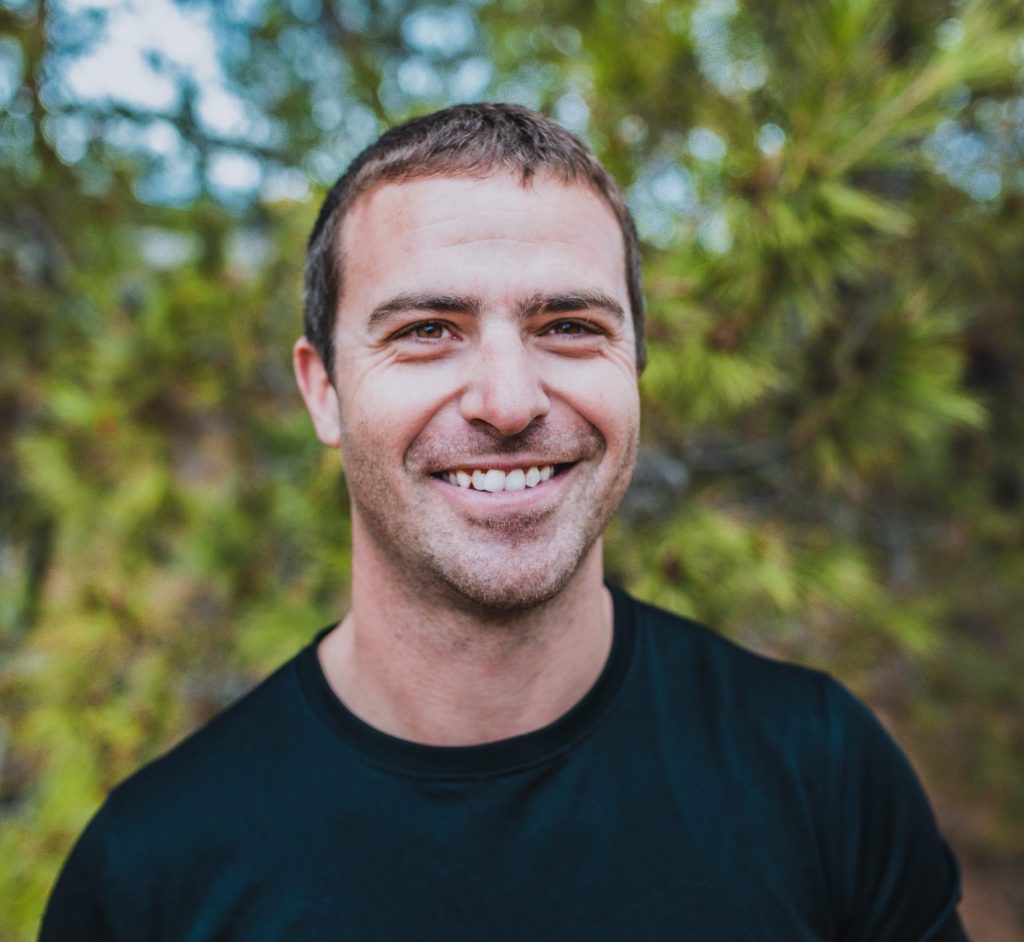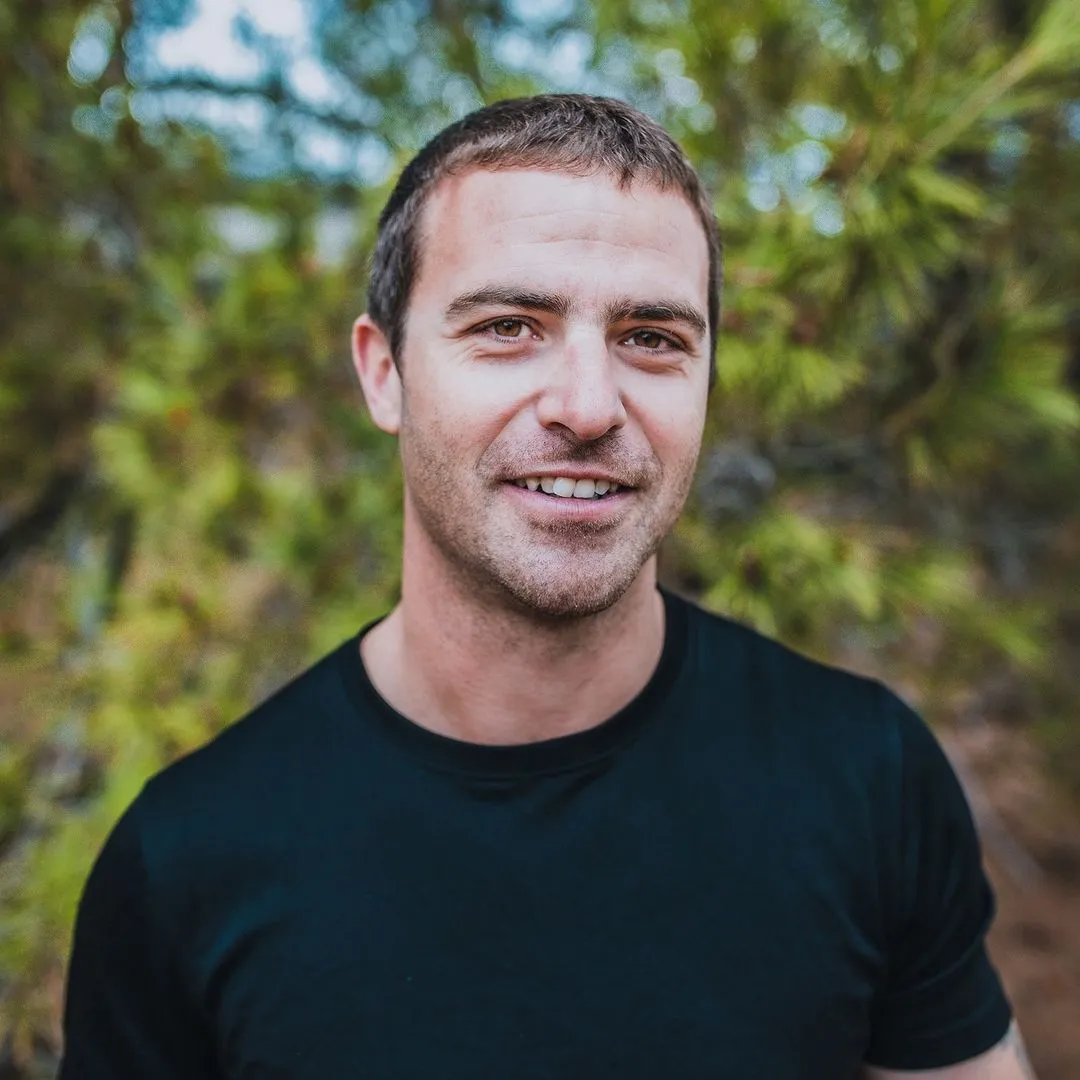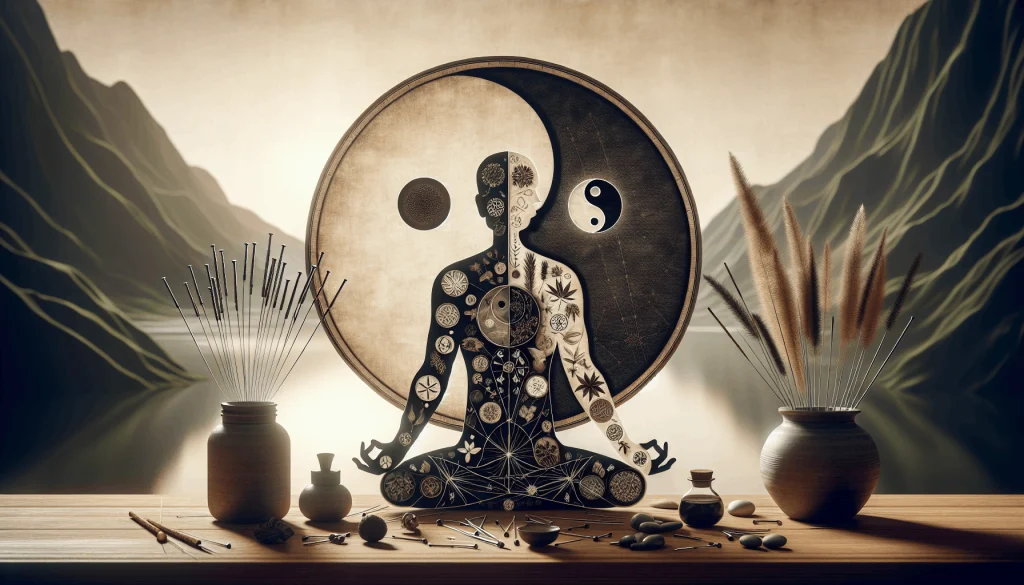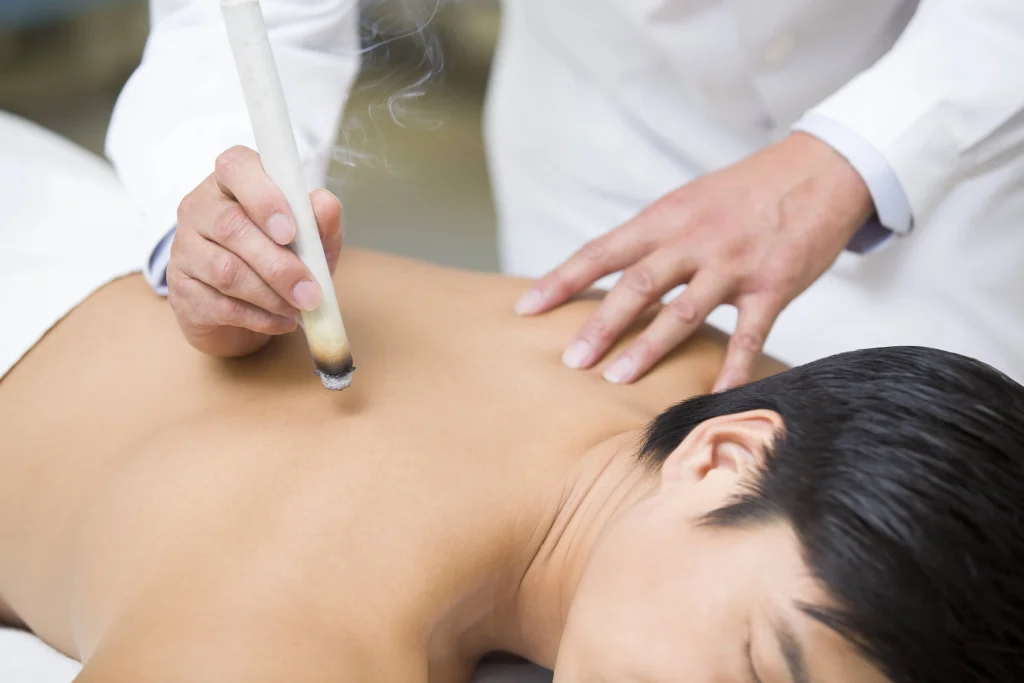Book Now

I’m Ivan, an ever-learning Chinese Medicine Practitioner offering Acupuncture, Moxibustion, Cupping, Chinese Massage (Tui Na), lifestyle, diet and Herbal Medicine to all ages and walks of life. I offer a unique perspective on health, wellness and illness process, rooted deep in Chinese Medicine Tradition, backed by parallels to modern understanding. My ethos is to inform, educate and include you in all treatment decisions and advice, ensuring you understand all aspects. With techniques to suit the very youngest right through to the very oldest members of your family, and catering for persons who are averse to needles, looking after your family’s well-being within a confidential, safe and welcoming space all falls under my domain.
Consult Options
Learn more about us

Acupuncturist
Traditional Chinese Medicine Doctor
I have been studying the art of Chinese Medicine for over a decade, and my study never ceases – the body is always showing us something new!
Dr Ivan Folghera BHSc. (Acupuncture)
We are located at:

Traditional Chinese Medicine is China’s original cultural traditional medicine system. It relies upon the cultural understanding about the body as a microcosmic system, reflecting the relationship of different elements of nature and their relationship with one another, to describe and affect the body’s natural disease resistance using diverse therapeutic methods which acknowledge acknowledge the position of human between heaven and earth. Rather than addressing one or two symptoms, this holistic and natural approach aims for to improvement all health aspects such as digestion, sleep, and mood to better combat illness. An Acupuncturist and Chinese medicine doctor specialises in this practice, focusing on balancing and harmonising the body’s energy to improve health, enhanced by modern understanding of anatomy, physiology and pathophysiology.
Acupuncture, a Traditional Chinese Medicine (TCM) method which utilises ultra-thin (0.12 – 0.30 mm in thickness) filiform needles, inserted into strategic body points to regulate energy flow. Nervous system branches known as neuro-vascular bundles are stimulated by this practice. Acupuncture is used to impact the nervous system/brain communication as well as by increasing circulation to aid the body. It can be effective in treating various health conditions1 by correcting imbalances in the energy pathways of the body known as meridians, for which a modern understanding is the relationship between different nervous pathways and Central Nervous system processing of those pathways.
TCM cupping therapy is an ancient healing practice involving suction cups placed on the skin. It aims to enhance blood flow, relieve muscle tension and clear stagnations in the body’s energy pathways. This therapy addresses the stoppage of Blood and Qi (vital energy) in the meridians which lead to illness. Despite its ancient origins, cupping therapy remains relevant today as a simple yet effective method for improving wellness and vitality when applied correctly.
Chinese herbal medicine is a major component of TCM. This therapy focuses on restoring balance and harmony using medicinal substances primarily from plants, minerals, and some animal products*. The benefits of Chinese herbal medicine when applied correctly are manifold. As the medicine is taken internally, correct diagnosis by a properly qualified Chinese Medicine Doctor is essential, as well as appropriate dosage guidelines, with follow-up and monitoring. Chinese Herbal Medicine is poly-pharmic, meaning that single herbs are rarely prescribed. Instead, herbs are given in formulas which helps to negate side effects of individual herbs, and allowing synergistic effect between complementary herbs, and moderating effects when using stronger herbs. The theory of TCM provides a framework by which any body imbalance can be treated with Chinese Herbs, where lifestyle, diet and the aforementioned physical therapies are not effective.
hinese massage therapy – utilising techniques such as acupressure, guasha (scraping) and other manual techniques – is another important aspect of TCM. Recognised for its potential to effect change on the meridians and clear stagnation Chinese massage therapy goes beyond just relaxation and is applied as a remedial therapy.
The benefits of Chinese massage therapy extend to pain reduction, increases in mobility, speeding up injury recovery and aiding in the body’s elimination processes making it an effective therapeutic technique for individuals seeking relief from various physical discomforts.
I work with you around limits that you and your body can tolerate so as to aid in restoring health as much as possible with each treatment. I am passionate about ensuring you obtain relief from your symptoms after each treatment. Your health and well-being is my absolute priority and passion.
The comprehensive approach of TCM enables it to tackle a plethora of ailments, stretching from chronic pain to issues related to the menstrual cycle, such as cramps, and respiratory disorders. It offers various therapies for musculoskeletal conditions such as osteoporosis, arthritis, and other common sources of pain, demonstrating its versatility in pain management.
Beyond these conditions, TCM can applied to a wide variety of other health issues as the theoretical framework of Chinese Medicine is applicable to the symptom patterns of all illnesses. It aims to address the root cause of the problem and re-balance the bodies’ energy to obtain a state of healthfulness.

I’m ready to start my healing journey!
Traditional Chinese Medicine in Adelaide – What is Traditional Chinese Medicine?
A comprehensive healthcare system known as Traditional Chinese Medicine (TCM) has been practiced for over 4,000 years in China and is still widely used today in most countries, not just China.
TCM is a comprehensive approach to health and well-being that includes a variety of therapeutic techniques to bring the body’s equilibrium and harmony back. Several fundamental ideas underpin TCM and influence how it categorises illness and provides healthcare:
Yin and Yang: In TCM, good health is seen as a delicate balance between nature’s two opposing but complementary forces, Yin and Yang. Yang is the term used to describe concepts of light, heat, and activity; in the body this refers to body warmth, movement, pain and the operation of the five senses. Yin is the embodiment of darkness, coldness, substance and passivity; in the human body this is muscles, fluid, connective tissue and the stroma of the organs. Sustaining the equilibrium between Yang and Yin is seen as crucial for optimal health.
Qi: Also described as vital energy, Qi is the life force that gives all living things their vitality. TCM theory states that Qi follows meridian pathways throughout the body, nourishing tissues and organs while promoting general health and vigor. It is the substance that drives mental function, emotions and movement. It is a Yang substance however Yang is considered the warming aspect while Qi relates closer to function.
Wu Xing: The Wu Xing or 5 element theory according to TCM refers to the elements Wood, Fire, Earth, Metal, and Water. Each represents an organ pair, tissue, and function of the body. Health and well-being are governed by the dynamic system of relationships between the 5 elements each element of which is interconnected and influences the others. Addressing pathologies in these relationships forms an integral part of TCM treatment.
TCM has been using acupuncture – an ancient healing technique – for thousands of years to treat a variety of illnesses and enhance general health and wellbeing. It entails inserting tiny, sterile filiform needles into points on the body along the meridians that Qi flows in, to balance the body’s energy flow and activate the body’s natural healing processes.
The Acupuncture Principles
The foundation of acupuncture is the idea of Qi, or life energy, which is pronounced “chi” moves through the body via channels known as meridians connecting the whole body as a unified whole. In TCM theory disturbances or obstructions in the flow of Qi lead to illness and discomfort. Acupuncture aims to restore the balance and unobstructed flow of Qi by putting needles into points along the meridians that serve to unblock these obstructions.
In order to choose the best course of treatment, your qualified acupuncturist will thoroughly evaluate your medical history and present symptoms prior to completing acupuncture in a given session. Following this, using precise and gentle techniques, the practitioner will insert thin, sterile needles into designated acupoints on the body if you are comfortable proceeding and after discussing all of the risks and benefits with you.
Depending on the particular ailment being treated and your specific needs and tolerance, acupuncture needles are usually inserted to different depths. To achieve the intended therapeutic effect, the practitioner may gently manipulate the needles once they are inserted. This is to elicit “De Qi,” or ‘arrival of Qi’ which can manifest as warmth, heaviness, or tingling that is frequently described as occurring at the needle insertion site. This sensation is thought to be a sign that the acupuncture point has been successfully stimulated.
Acupuncture is often combined with moxibustion, the burning of mugwort near the skin at acupuncture points to warm the channels, expel cold and stop pain. Moxibustion is an integral adjunct to acupuncture treatments and apart from a minor risk of burns, carries a wide range of benefits in harmonising and warming the channels of the body to treat Yang Deficiency and Yin Excess disorders.
What conditions are treated with acupuncture?
Numerous acute and chronic conditions have been effectively treated with acupuncture, including:
Pain Management: When it comes to treating pain brought on by ailments like plantar heel pain, migraines, arthritis, and low back pain, acupuncture is a highly effective method. It functions by inducing the body’s natural pain-relieving chemicals, endorphins, to be released and by lowering inflammation.
Depression, Stress and Anxiety: Due to its well-known calming and relaxing properties, acupuncture is a great way to treat emotional imbalances such as stress and anxiety. It supports overall wellbeing and aids in nervous system regulation.
Digestive Disorders: By controlling digestive function and lowering gastrointestinal tract inflammation, acupuncture can help relieve the symptoms of digestive disorders to alleviate suffering.
Women’s Health: Menstrual irregularities, fertilit problems and menopausal symptoms are among the gynecological conditions that acupuncture is frequently used to treat.
Acupuncture provides a comprehensive approach to health and wellness and is a safe, natural, and effective healing modality. Whether used as a standalone treatment or in conjunction with other therapies, acupuncture can help individuals achieve relief from pain, stress, and a variety of other health concerns. Acupuncture has a long history of success and an increasing amount of scientific research demonstrating its effectiveness, making it a useful tool for achieving optimal health and wellbeing.
What is Traditional Chinese Herbal Medicine?
A vital component of TCM, Traditional Chinese Herbal Medicine is a complex system of natural healing that has been used for the same length of time as Acupuncture (circa 4,000 years). Chinese herbal medicine uses plants and minerals and animal products (only ethical animal products are used in our clinic) to restore the body’s equilibrium and harmony. The foundation of Chinese Herbal Medicine is that all plants and minerals have different thermal natures, different flavours according to Wu Xing (5 Element Theory) and enter different organs. They also have different directions of movement of energy. These factors are taken into account when prescribing herbs – as well as the blending of herbs for complementary or contradictory effect – and the resultant formula given to suit your disharmony, if herbs are indicated.
Energetic Properties of Chinese Herbs: The energetic qualities of each herb are categorised based on their taste (bitter, sweet, sour, salty, or pungent), actions (dispersing, nourishing, downbearing, uplifting etc.), and temperature (cooling or warming). These characteristics dictate the herb’s therapeutic effects and how it interacts with the body.
Synergistic Formulas: To maximize therapeutic effects and reduce side effects, several carefully chosen herbs are combined in herbal formulas. Based on their energetic qualities and actions, herbs work in harmony to create a formula that is balanced and suited to each person’s unique needs.
Tailored Care: In Chinese Herbal Medicine, there isn’t a single treatment plan that works for everyone. Herbal remedies are tailored to the individual constitution, disharmony pattern, and symptoms of each patient. With this tailored approach, the underlying cause of illness is addressed and the body’s natural healing capacity is supported.
Chinese herbs are made from a variety of plant materials, such as minerals, animal products, and the roots, leaves, flowers, seeds, and bark of plants. Usually, they are prescribed as tinctures, powders, pills, decoctions (herbal teas), or topical preparations. The choice of herbs is determined by the intended therapeutic result, their compatibility with other herbs, and their unique therapeutic qualities. This clinic only uses animal products that are sourced ethically and only when there is no plant-based alternative.
What are the dietary principles in Traditional Chinese Medicine?
A key component of TCM and Chinese culture is dietary therapy. Dietary therapy in TCM is based on the idea that food serves as both medicine and nourishment for the body. It emphasizes the significance of eating a balanced diet that is specific to each person’s constitution and health issues.
The TCM dietetic approach is based on the idea that food – much like herbal medicine but gentler – can restore the body to a state of balance and harmony. By choosing foods that nourish and tonify the organs and tissues, encourage the free flow of Qi and Blood, and clear pathogens like damp and excess heat can prevent or treat imbalances that may cause illness.
Much like Chinese Herbal Medicine, foods are categorised in TCM based on their energetic qualities, which include actions (tonifying, dispersing, downbearing, lifting etc.) and temperature (cooling or warming) and taste (bitter, sweet, sour, salty, or pungent). For instance, warming foods like ginger and cinnamon are thought to aid in digestion and circulation whereas cooling foods like cucumber and watermelon aid in eliminating heat and adding moisture to the body. People can choose foods that best suit their individual constitutions and health objectives by being aware of the energetic qualities of different foods.
The importance of maintaining the body’s Yin and Yang energy balance is the point of emphasis in TCM dietary therapy. A varied range of foods that support both Yin and Yang are part of a balanced diet which enhances general health and vitality. For instance, Yin is supported by a diet high in fruits, vegetables, and seafood, and Yang is supported by foods high in protein and warming spices.
The value of customized care is one of the main tenets of TCM dietary therapy. People are urged to listen to their bodies and make food decisions based on their individual constitutions, health concerns, and seasonal influences as opposed to following rigid dietary guidelines or fads.
In TCM, dietary therapy has many advantages for treating and preventing a wide range of illnesses. A nutritious, well-balanced diet can help people achieve the following:
Encourage the assimilation and digestion of nutrients
Boost vitality and energy levels
Bolster the immune system
Sustain a healthy weight
Reduce oxidative stress and inflammation
Encourage mental clarity and emotional health
What is Cupping in Traditional Chinese Medicine?
Cupping is a cultural medicinal technique that has been utilised for centuries in many different cultures, such as Ayurveda (India), TCM (China) and Middle Eastern medicine. It involves applying cups—usually made of bamboo, plastic, or glass—to the skin in order to create suction, which eases discomfort and aids in healing. Although cupping has become more well-known recently – particularly among athletes and celebrities – its origins can be found in the ancient world when it was utilized as a cure-all for a variety of illnesses.
Cups are positioned against the skin during a cupping session and a vacuum is produced either by heating the air within the cup or by using a mechanical pump. A suction effect is produced when the skin and underlying tissue are pulled into the cup as the air cools and the pressure inside the cup increases. To promote circulation and relieve muscle tension the cups can be slid over the skin or left in place for a few minutes.
Traditional medicinal practices employ a variety of cupping techniques and variations, including:
Dry Cupping: In this method, cups are applied to the skin without any other substances being applied.
Wet Cupping: Often referred to as blood cupping or hijama, wet cupping is a technique in which tiny skin incisions are made prior to the application of cups in order to extract a small amount of blood. This method is supposed to help the body detoxify and get rid of poisons and stagnant blood.
Fire Cupping: Traditionally, fire cupping involves lighting a cotton ball soaked in alcohol inside a cup, creating a small vacuum inside, and then applying the cup to the skin.
Moving Cupping: In moving cupping, the cups are placed on the skin after a lubricant – like oil – has been applied. This allows the cups to glide over the body without damaging the skin or producing too much discomfort.
Cupping is thought to provide several health advantages, such as:
Pain Relief: Cupping can help alleviate muscle tension, reduce inflammation, and relieve pain associated with conditions such as back pain, neck pain, and headaches.
Enhanced Circulation: Cupping applies suction to the skin, increasing blood flow to the affected area. This can aid in the healing process and enhance circulation.
Detoxification: By drawing out stagnant blood and encouraging the flow of lymphatic fluid, wet cupping is believed to help remove toxins and impurities from the body. In Chinese Medicine the appearance of bruising after the cup has been applied (called sha) indicates the removal of toxins from the internal organs and tissues.
Relaxation and Stress Reduction: A lot of people discover that cupping is incredibly therapeutic and calming, which helps to ease tension, anxiety, and stress in the body and mind.
What is Gua Sha in Traditional Chinese Medicine?
Gua Sha is one of the forms of manual therapy in TCM. Gua Sha – sometimes referred to as “scraping” is a gentle method of gently scraping the skin with long, gentle strokes using a smooth-edged tool made of jade, horn, or ceramic. This scraping motion causes the skin to become red or develop petechiae, or tiny red dots, which aid in circulation, stress release, and the body’s natural healing process.
Gua Sha is used in Chinese medicine to treat a wide range of ailments such as skin disorders, respiratory troubles and muscle pain, stiffness and tension. Although it can be applied to other parts of the body as well it is commonly used on the back, neck, shoulders, and limbs. When administered by a qualified professional, Gua Sha is regarded as a safe and effective therapy. For maximum therapeutic effects, it is frequently combined with acupuncture or massage treatments.
1Koppelman, M.H. (2024). Acupuncture: an overview of scientific evidence. Evidence Based Acupuncture. https://www.evidencebasedacupuncture.org/acupuncture-scientific-evidence/
*(Dr Ivan Folghera BHSc. (Acupuncture) only sources and supplies ethical herbal medicine products and does not utilise medicinals from endangered animal species)